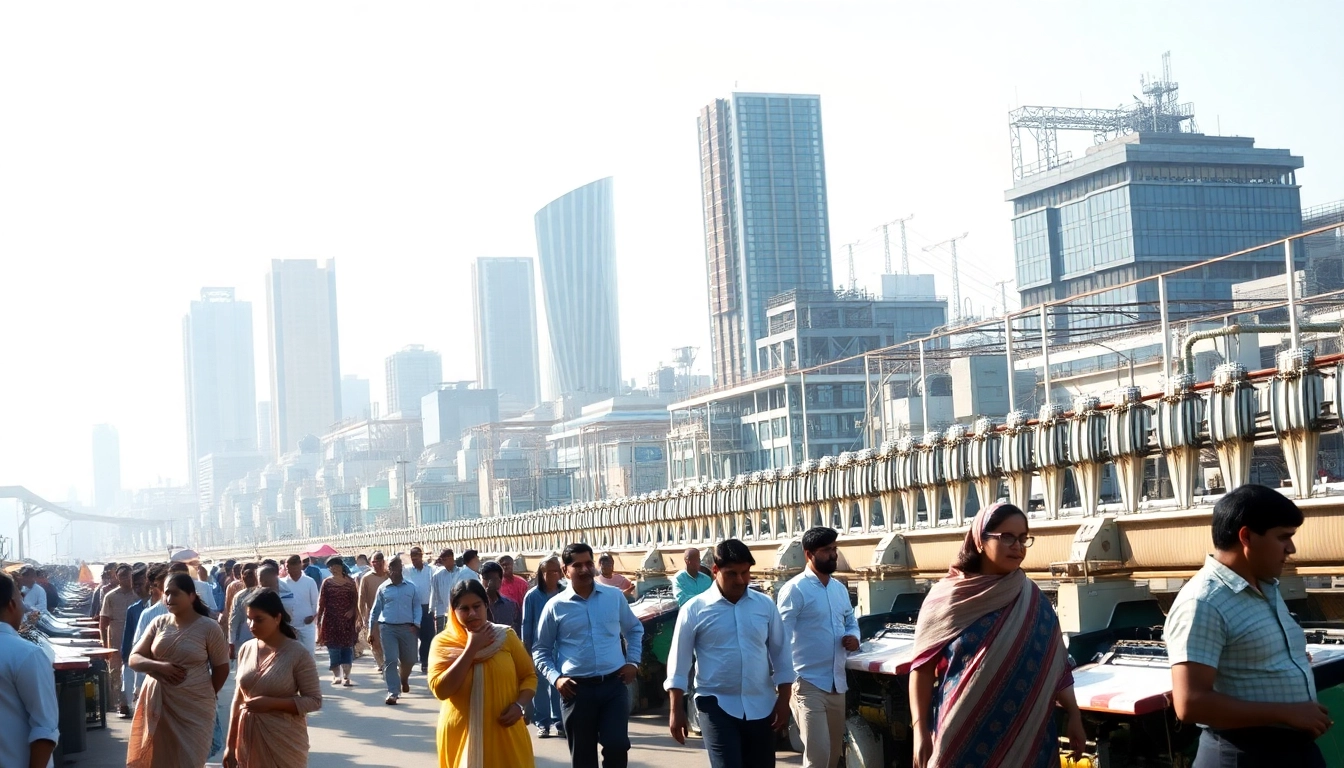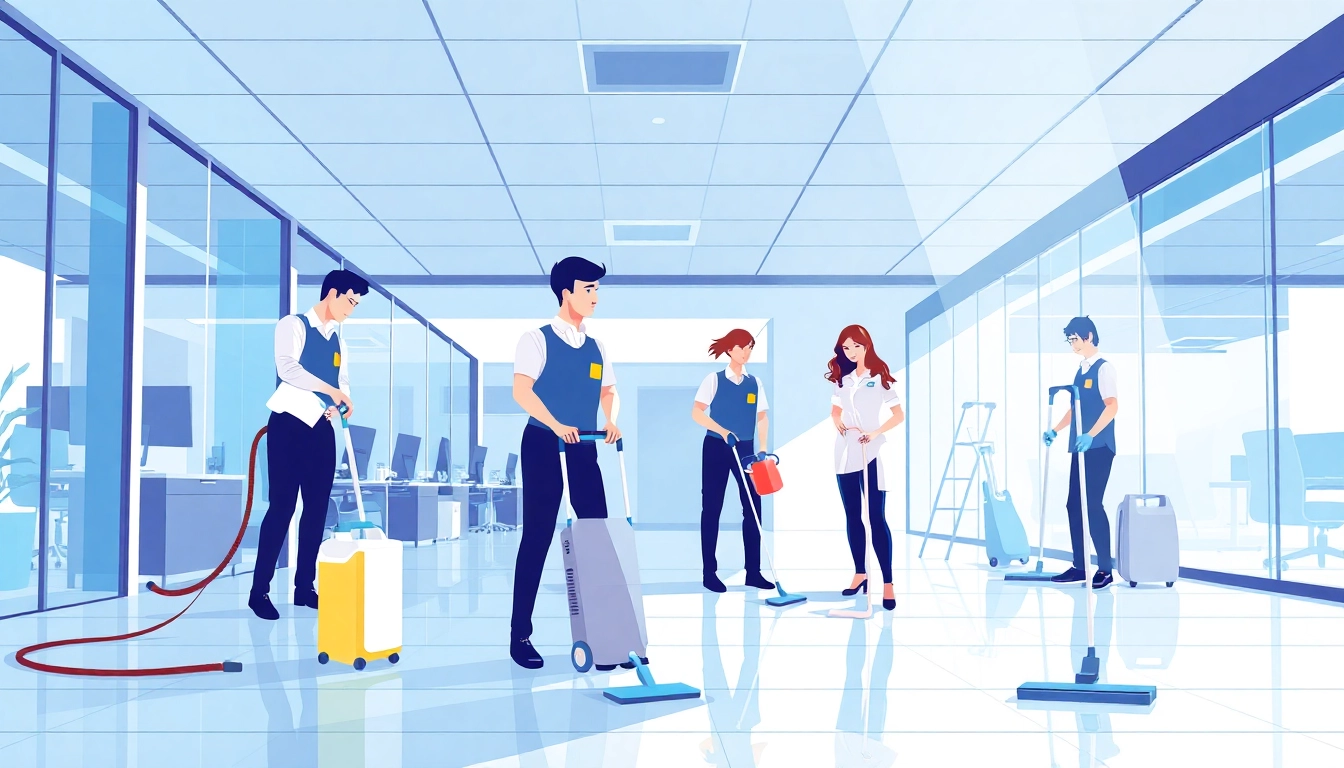Introduction to Surat Economy
Surat, a prominent city located in the western Indian state of Gujarat, is renowned for its remarkable economic growth and vibrant entrepreneurial spirit. Once a bustling trading port in the 16th century, Surat has evolved into a hub for various industries, notably textiles and diamond processing. The city’s economy plays a significant role in the broader Indian economic framework, characterized by its rapid urbanization and development. Surat boasts a GDP of approximately $40 billion, making it one of the top cities in India by economic output. The dynamics of the surat economy are continually shaped by historical influences, current economic conditions, and future prospects.
Understanding the various facets of the surat economy provides insights into its significance. For an in-depth exploration, you can delve deeper into resources discussing the surat economy. In this article, we will examine the historical context, current economic landscape, key driving sectors, challenges being faced, and future opportunities for growth and development.
Historical Context of Surat’s Economic Development
The history of Surat’s economic development is steeped in its legacy as a major trading port during the Mughal era. The city became a center for trade between India and Europe, benefiting from its strategic position along the Tapi River. The influx of traders, especially during the British colonial period, accelerated Surat’s urbanization and industrial growth. By the late 19th century, Surat was already a significant center for the cotton textile industry, which laid the groundwork for its modern economic profile.
Post-independence, Surat experienced a transformation with the establishment of various industries, particularly the diamond cutting and polishing trade, which today sees the city processing a significant portion of the world’s diamonds. The historical investments in infrastructure, such as ports and railways, further catalyzed Surat’s growth as an economic powerhouse.
Current Economic Landscape of Surat
Currently, Surat’s economy is diversified, comprising textiles, diamond trading, chemicals, and other manufacturing processes. The textile industry is particularly noteworthy, with Surat being one of the largest producers of synthetic textiles in India. Approximately 55% of the textile production in the state of Gujarat comes from Surat, contributing significantly to employment and income in the city.
The diamond industry also plays a pivotal role in Surat’s economic landscape. The city is often referred to as the diamond capital of the world, housing over 90% of the diamond cutting and polishing units in India. This sector employs around 600,000 people, showcasing the depth of human capital in Surat. Alongside these industries, the city has seen growth in the IT and technology sectors, indicating a shift towards modern and innovative industries.
Importance of Surat in the Indian Economic Framework
Surat functions as a vital cog in the Indian economy, contributing significantly to the nation’s GDP and employment. The city’s rapid growth has made it an essential part of Gujarat’s economic narrative, particularly with initiatives aimed at making Gujarat a $3.5 trillion economy by a specified target year. Surat’s contributions to the textile and diamond industries not only fortify the local economy but also enhance India’s standings in global trade.
As Surat continues to evolve, it emerges as an attractive destination for investment, attracting entrepreneurs and multinational companies looking to capitalize on its skilled workforce and strategic location. Therefore, Surat’s economic success story is emblematic of India’s broader economic ambitions, positioning the city as a critical player on the global economic stage.
Sectors Driving Surat Economy
Textile Manufacturing and Its Impact
The textile industry is the lifeblood of Surat’s economy. Known for its production of synthetic fabrics, including polyester and rayon, Surat has a robust textile manufacturing capability. With over 4,000 textile mills and a large number of small-scale textile units, Surat’s textile production accounts for a major share of India’s textile exports.
The city’s textile market is characterized by a strong presence of both traditional craftsmanship and modern manufacturing processes. Local artisans produce intricate fabric designs, incorporating traditional methods with contemporary styles, appealing to both domestic and international markets. Additionally, the textile sector in Surat provides substantial employment opportunities, with over a million citizens engaged in various capacities from manufacturing to sales.
Recent trends indicate a shift towards eco-friendly products, with many manufacturers embracing sustainable practices. The adoption of technologies such as digital printing and automation has enabled the industry to innovate and remain competitive in a rapidly changing global market.
Diamond Cutting and Polishing Industries
Surat’s diamond cutting and polishing industry is a cornerstone of its economy. The city is a global leader in this sector, with estimates indicating that around 80% of the world’s diamonds are processed in Surat. This industry not only brings significant revenue but also establishes Surat as a critical hub in the global supply chain for diamonds.
The diamond industry in Surat is characterized by its skilled workforce, with trained professionals adept at cutting and polishing diamonds to exact specifications. The city’s educational institutes also play a role in this by providing specialized training programs to enhance the skills of workers entering the industry.
In recent years, the diamond sector has faced challenges, including global competition and fluctuating diamond prices; however, Surat’s innovation in production techniques and technology adoption has helped mitigate some of these impacts. The interplay of tradition and technology continues to define the future of this industry in Surat.
Emerging Technology Sectors in Surat
Surat is gradually transitioning towards becoming a technology-driven economy. The emergence of Information Technology (IT) and Business Process Outsourcing (BPO) sectors marks an important shift in the economic landscape. The establishment of IT parks and incubators in the city aims to foster innovation and entrepreneurship, particularly for start-ups focusing on technology and software development.
These technology-driven sectors not only provide high-skilled employment opportunities but also contribute to the diversification of Surat’s economy, which has historically relied heavily on textiles and diamonds. The initiatives aimed at promoting technological advancement are also supported by the government through favorable policies and infrastructural development.
Surat’s strategic location, coupled with expanding connectivity, positions it favorably for technology companies looking to establish a presence in the region. Such developments are likely to attract investment and foster an ecosystem conducive to innovation.
Challenges Facing Surat Economy
Infrastructure and Logistics Issues
Despite its vibrant economy, Surat faces several challenges, particularly in terms of infrastructure and logistics. The rapid growth of the city has put immense pressure on its existing infrastructure, leading to issues such as traffic congestion, inadequate public transport, and insufficient waste management systems.
Logistical challenges are particularly evident in the transportation of goods, which can hinder the efficiency of both the textile and diamond industries. Inadequate port facilities and road connectivity pose significant obstacles to timely delivery and distribution of products. Addressing these infrastructure deficiencies is crucial for sustaining the growth of Surat’s economy.
The government and local authorities must prioritize investments in infrastructure development and urban planning to alleviate these challenges. Initiatives such as enhancing arterial roads, improving public transportation systems, and expanding port facilities can lead to more efficient operations and overall economic growth.
Environmental Concerns and Sustainability
As Surat’s economy continues to expand, environmental sustainability emerges as a critical concern. The textile and diamond industries are resource-intensive and can generate significant waste and pollution. There is a growing demand for sustainable practices and eco-friendly production methods to mitigate these environmental impacts.
In response, industries are increasingly adopting sustainable practices, including water recycling, waste management systems, and the use of renewable energy sources. However, implementation can be slow, and many small-scale manufacturers may lack the resources to transition effectively.
To promote sustainability, stakeholders must invest in training and awareness programs aimed at educating businesses about the benefits of environmentally friendly practices. Collaboration between government and industry to develop policies that encourage sustainability can also play a vital role in creating a greener Surat.
Economic Disparities and Labor Market Issues
Economic disparities represent a critical issue in Surat, especially in the context of the rapid industrial growth experienced by the city. While certain sectors thrive, others lag, leading to uneven wealth distribution and challenges related to income inequality.
Furthermore, labor market issues such as unorganized labor, low wages, and limited access to job training exacerbate these disparities. Many workers, especially in the informal sector, remain without job security or benefits, which can further entrench poverty and economic instability.
Addressing these socio-economic challenges requires comprehensive policy initiatives aimed at worker rights, fair wages, and skills development. Fostering a holistic approach that includes promoting entrepreneurial opportunities and access to education for marginalized communities will be crucial to creating a more equitable economic landscape.
Future Prospects for Surat Economy
Strategic Initiatives for Growth
Looking to the future, Surat has embarked on several strategic initiatives aimed at bolstering its economic potential. Programs like the Surat Economic Region (SER) aim to develop the region into a major economic hub, targeting substantial growth through plans to diversify industries and attract investment.
These initiatives include establishing industrial clusters, enhancing connectivity, and improving business environments to foster entrepreneurship and innovation. Additionally, the city is focusing on promoting small and medium-sized enterprises as a means of job creation and economic resilience.
Furthermore, the embrace of smart city initiatives, including the adoption of technology in infrastructure management, digital services, and efficient resource utilization, is anticipated to catalyze growth and enhance living standards for Surat’s citizens.
Role of Government in Economic Development
The government plays a pivotal role in the economic development of Surat. With a focus on enhancing infrastructure, ensuring favorable policies for industries, and promoting foreign investments, the government seeks to create an enabling environment for sustainable growth. Investment in public services such as healthcare, education, and quality of life is equally important for overall economic stability and to attract skilled labor to the city.
The development of public-private partnerships (PPPs) can further lend itself to achieving greater efficiencies in delivering services and infrastructure. Active engagement with local businesses, industry leaders, and communities is crucial for aligning the development strategies with the needs of stakeholders.
Urbanization and Industrial Expansion Opportunities
Rapid urbanization presents both challenges and opportunities for Surat’s economy. As the population continues to grow, there will be an increasing demand for housing, transport, and public services. This rapid urban growth can spur industrial expansion and attract businesses looking to capitalize on the growing consumer base.
Urban planning that integrates sustainable practices and efficient resource utilization will be essential in managing this urbanization effectively. Opportunities to develop affordable housing, invest in public transport, and upgrade urban infrastructure can create a balanced growth ecosystem conducive to long-term prosperity.
Additionally, Surat’s appeal as a favorable location for businesses can streamline efforts to bring in new industries and foster economic diversification.
Conclusion
Summary of Key Insights
Surat’s economy represents a dynamic and multifaceted landscape characterized by rich historical roots, a diverse industrial base, and significant potential for future growth. From its foundation in textile manufacturing and diamond processing to its evolving technology sector, Surat exemplifies resilience and adaptability in the face of challenges.
Key challenges, including infrastructure deficits, environmental sustainability, and economic disparities, necessitate comprehensive strategies involving various stakeholders. Addressing these issues can pave the way for sustained growth and competitiveness on both domestic and global fronts.
Recommendations for Stakeholders
For Surat to continue its trajectory of growth, it is essential for stakeholders, including government entities, business leaders, and the community, to collaborate effectively. Recommendations include:
- Prioritizing infrastructure development to address current deficits and support future industrial needs.
- Encouraging environmentally sustainable practices across all industries to mitigate environmental impact.
- Creating avenues for skill development and job training to enhance workforce capabilities, particularly for marginalized communities.
- Enhancing public-private partnerships to leverage resources and expertise for urban and industrial development.
Final Thoughts on Surat’s Economic Future
The future of Surat’s economy looks promising, provided that strategic initiatives and collaborations are strengthened. By embracing innovation, pursuing sustainable practices, and focusing on equitable development, Surat can enhance its status as not only a leading city in India but also a significant player in the global economy.



